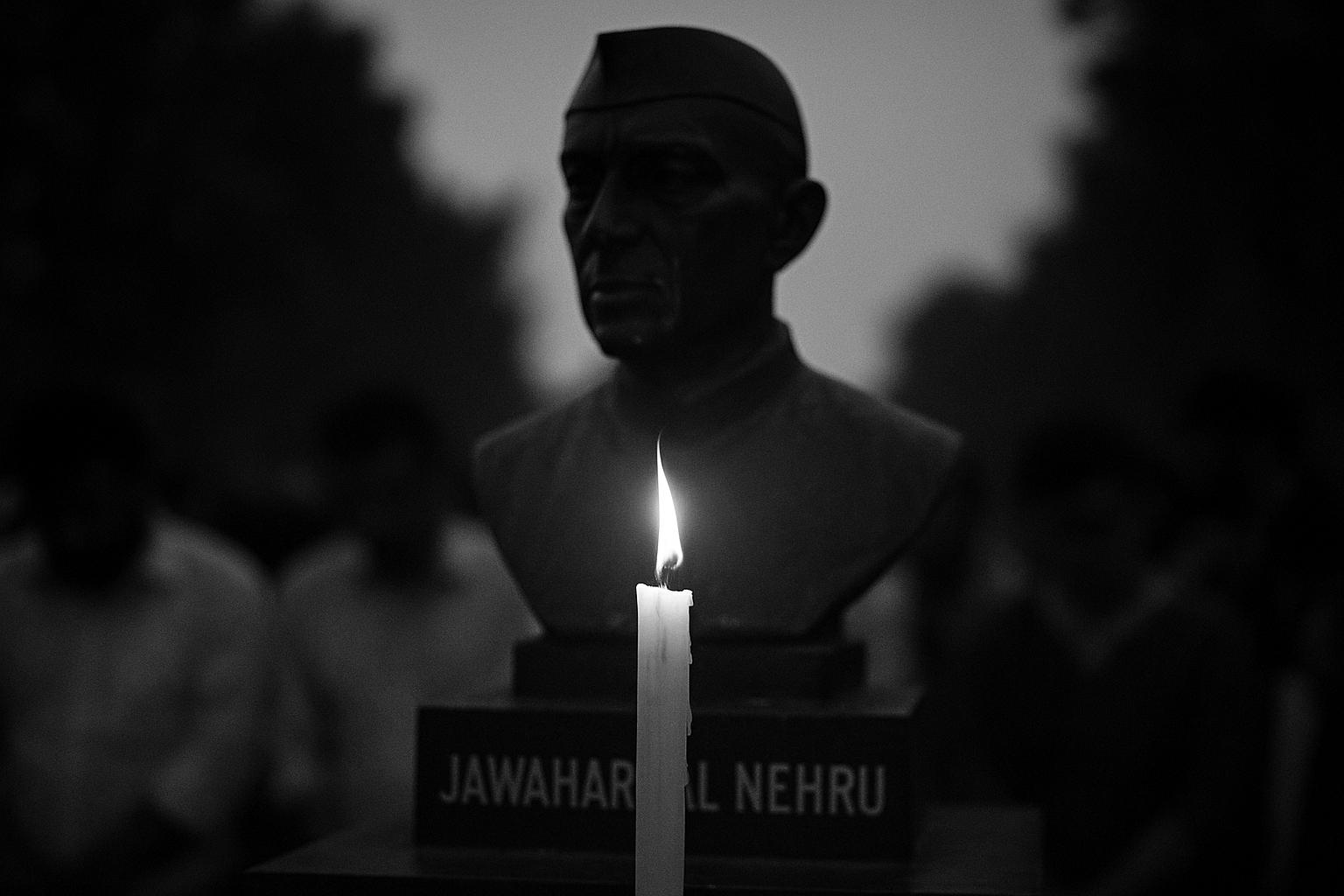As the sun cast a warm glow over a small square behind the Indian High Commission in London, a poignant gathering unfolded on 15 June 2025. Approximately 200 individuals came together to honour the victims of the catastrophic Air India disaster that claimed the lives of at least 270 people earlier that week. This vigil was among several held across the UK, particularly by members of the Gujarati community, who sought solace in shared grief during a profoundly unsettling time.
Candles lit beneath a bust of Jawaharlal Nehru provided a backdrop to the moment, as speakers included inter-faith leaders and community members. Students Ridhi Sarmah-Kapoor and Olivia Gearson, whose fathers recently made the journey from Gujarat to London, represented a younger generation intimately aware of the tragedy's implications. Sarmah-Kapoor shared, “My dad frequently goes back and forth to India and he uses Air India. It gives it a personal connection – it’s like these people are my family.” Gearson echoed this sentiment, noting the emotional weight of the incident, particularly as it involved individuals returning for significant life events, such as graduations.
The gathering highlighted the remarkably tight-knit nature of the Gujarati community in the UK, with many attendees expressing a profound sense of personal loss. Organiser Mayur Shikotra emphasised the need for a space to grieve, stating, “We needed somewhere to mourn.” His co-organiser, Pranav Bhanot, added that the tragedy felt especially personal, as the limited number of direct flights from Gujarat meant that “it really could have been anyone.” This sentiment resonated deeply among community members, as they reflected on their connections to those lost.
The impact of the disaster extended beyond personal grief into a call for accountability. Many at the vigil expressed a desire for Boeing, the aircraft manufacturer, to be held responsible should investigations reveal negligence. “My first thought is the Boeing 787," said Narendra Thakerar, who recently flown on Air India. The Indian government has since ordered inspections of the Boeing 787 fleet, which had previously maintained a solid safety record with over 1,100 of these aircraft in operation worldwide.
In the days following the crash, investigations ramped up, with U.S. officials and India's aviation regulatory body involved in examining possible technical failures that may have contributed to the disaster. Reports indicated that the Air India flight experienced a tragic descent mere moments after takeoff, hitting a residential area and subsequently igniting into flames. One only survivor, Vishwash Kumar Ramesh, was thrown from the wreckage, underscoring the sheer brutality of the event.
As authorities in Ahmedabad began to identify and return the remains of victims, families faced the agonising reality of prolonged uncertainty. With many bodies found in unrecognisable conditions, DNA matching became a slow yet vital process. Approximately 32 victims had been identified at the time of the vigil, yet frustrations pervaded as families awaited news of their loved ones. Mahesh Patel, attending the vigil, remarked on the profound impact of ageing aircraft: “The problem is when you’re dealing with old planes that have been sold and resold.”
As the community held its vigil, they equally looked towards the future with hope for systemic change in aviation safety and a heartfelt recognition of the loss suffered. Amidst this sorrow, a sense of resilience emerged as community members vowed to ensure that the memories of those lost would not be forgotten. “It’s really important that we find out what happened,” Bhanot emphasised, underscoring the need for justice that, while it may not bring back the departed, acknowledges the depth of collective sorrow experienced.
📌 Reference Map:
- Paragraph 1 – [1], [2]
- Paragraph 2 – [1], [5]
- Paragraph 3 – [2], [4]
- Paragraph 4 – [3], [6]
- Paragraph 5 – [7]
Source: Noah Wire Services
